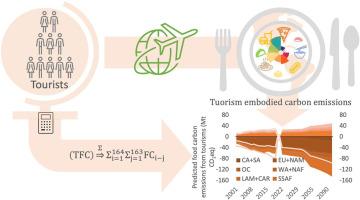Quantitative impact analysis of cross-border tourism on global food greenhouse gas emissions
Abstract
Globalization has fueled the rapid expansion of international tourism, significantly impacting global food systems. This study aims to quantitatively evaluate the influence of tourism on global food greenhouse gas (GHG) emissions. By integrating the Food and Agriculture Organization Statistical Database and the World Tourism Organization Tourism Statistics database, we analyze regional differences in dietary choices among cross-border tourists and connect them to detailed national-level food supply inventories, enabling us to estimate the GHG emissions associated with cross-border tourism. Additionally, we employ the modified Regional Integrated model of Climate and the Economy (RICE) model to project future trends in tourism-related GHG emissions across regions and countries. Our findings indicate that tourism has resulted in a reduction of 620 Mt CO2e in global food system emissions between 2001 and 2019. Taking into account tourism development trajectories and regional economic growth, our projection suggests that GHG emissions reduction from the global food system resulting from tourism could reach a substantial 96 Mt CO2e per year by 2100. The analysis shows that strengthening the national economy and increasing the labor force, and taking reasonable measures to change the social diet pattern in different regions can further reduce tourism embodied food GHG emissions. This study highlights the significant role of tourism in mitigating global food system emissions and underscores the potential for further emission reductions in the future.


 求助内容:
求助内容: 应助结果提醒方式:
应助结果提醒方式:


